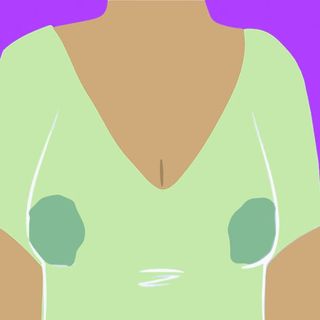Since 1977, the World Health Organisation has developed a list of essential medicine based public health need, evidence on safety and effectiveness and affordability. Essential medicines are medicines that are intended to serve the priority health care needs of populations. Given that an estimated 70% of pharmaceuticals on the global market are nonessential or duplicative, the aim of a limited list of essential medicines is to enable rational use, lower costs and improved access. This list, which is updated every two years, currently contains 374 medicines and is intended to be a model for other countries; India’s 2015 National List of Essential Medicines, its most up-to-date list, contains 376 medicines.
These medicines should be widely available across India in public health facilities such as health centres and hospitals. Due to limited resources, supplies in public health facilities often run out and patients are forced to turn to private sector chemist shops, where medicines are more expensive. We set out to test how accessible these essential medicines actually are by analyzing the availability of six medicines across 124 private retail pharmacies in four districts of Maharashtra state: Dhule in the north, Sangli in the south, Nagpur in the east, and Mumbai city district in the west.
The six essential medicines we tracked were: artemisinin, lamivudine, rifampicin, oxytocin, fluoxetine and metformin, each used to treat different, critical condition. Artemisinin is used as a treatment for malaria; India has a high prevalence of malaria with around 2 million reported cases and 1000 annual deaths. Lamivudine, an antiretroviral medicine, is used for the treatment of HIV/AIDS; according to the UNAIDS Gap Report India has the third largest HIV epidemic with 2.1 million people living with the illness. Rifampicin is used for the treatment of both Tuberculosis and Leprosy; India has the highest levels of TB infection and the highest prevalence of leprosy in the world. Oxytocin is a first-line drug used for active management of third stage labour. Metformin is used for diabetes. The number of people diagnosed with diabetes in India is increasing; there are 69.2 million people with the disease in the country which is the second highest after China’s 109.6 million. And fluoxetine is used as a treatment of depression. A recent systematic review of mental health in India estimates 20% of the adult population in India to be affected by some form of psychiatric disorder.
We compared what we found in the pharmacies with three open-access Indian pharmaceutical databases, CIMS India, Medindia, and Medguide, and the commercial database, Pharmatrac.
The study found that although multiple brands of the essential medicines — running into thousands — were listed as available in India, only a few of these were available in the pharmacies. Metformin was the only medicine with high availability; by contrast, rifampicin was present in just above half the pharmacies (64.5%). The other four medicines were available in less than half.
The inadequate availability of essential medicines in public health outlets stands in stark contrast to India’s status as a major producer and exporter of generic medicines.
And while the data from the national pharma databases showed that there was a high level of market competition for these six medications, this has not led to adequate supply of essential medicines in the pharmacies.
A further area of concern is that the metformin medicines were mostly available in multiple brands of fixed-dose combinations (FDCs), where two or more drugs are combined in a set ratio in a single dose form, usually a tablet or capsule. This, despite concerns in India over the safety and effectiveness of these products and efforts to remove them from the market: In 2007, the country’s Central Drugs Standard Control Organization (CDSCO) banned 294 FDCs, which had been approved by state authorities but had never received central authorisation; in 2012 a further 45 FDCs were withdrawn.
The inadequate availability of essential medicines in public health outlets stands in stark contrast to India’s status as a major producer and exporter of generic medicines. There are presently more than 10,500 pharmaceutical manufacturing units in India. Indian companies produce around 60,000 generic drugs and over 400 bulk drugs used in formulations. The industry is ranked third globally in terms of volume and 14th in terms of value, and is growing at 16% per annum. India currently exports off-patent generic drugs to more than 200 countries, for this reason it is often dubbed ‘the pharmacy of the world.’
In theory, competition within India’s vast market for generic drugs should ensure that essential medicines are available in private retail outlets at a price people can afford. Our research shows in practice, this is not the case.
It is time for the CDSCO to review a number of brands on the market, taking into consideration sales, availability, price and the grounds for approval. There is an urgent need for a consumer-friendly central database, which will enable people to verify manufacturing approval, efficacy and compare prices. Only then will India begin to be a pharmacy for itself, as well as for the rest of the world.




